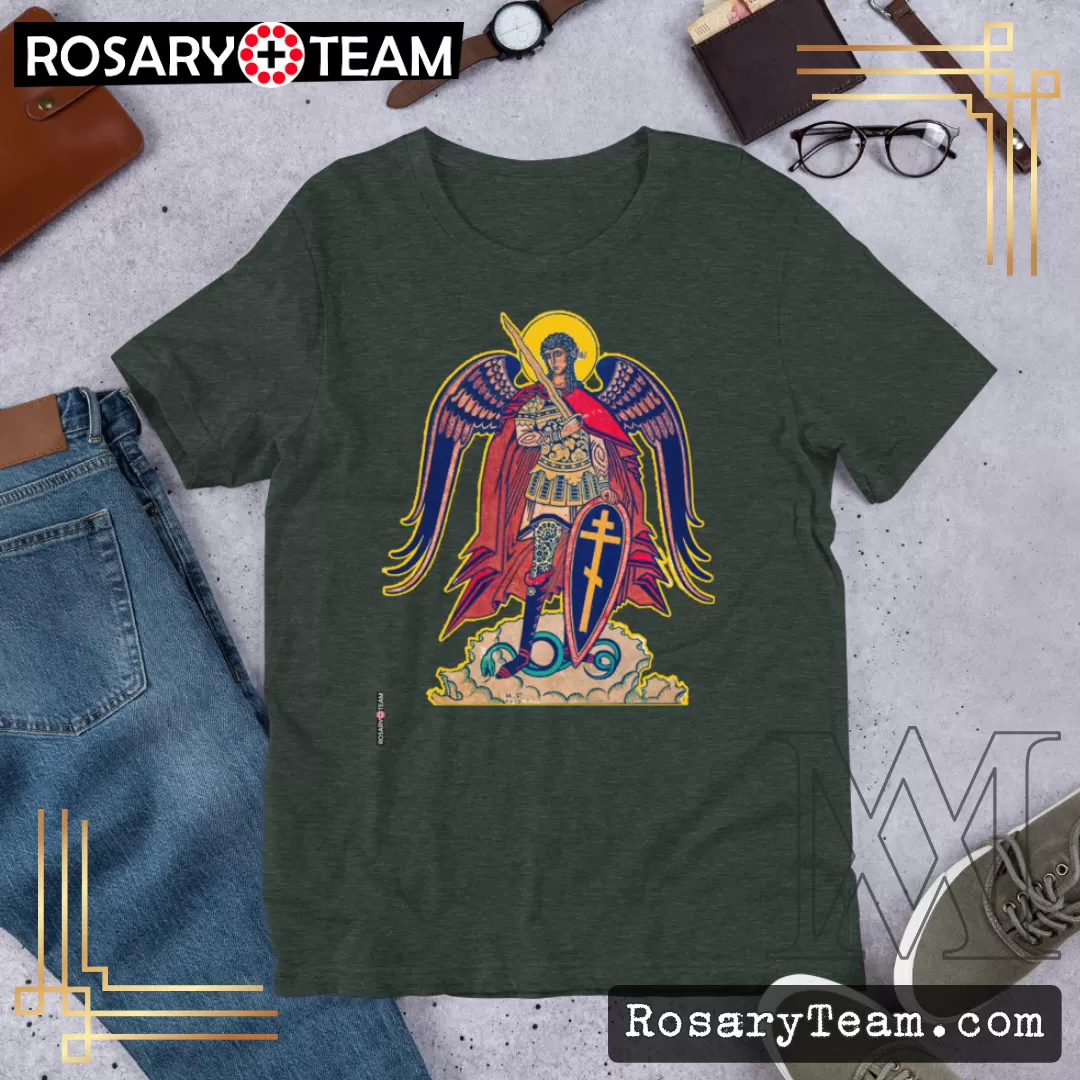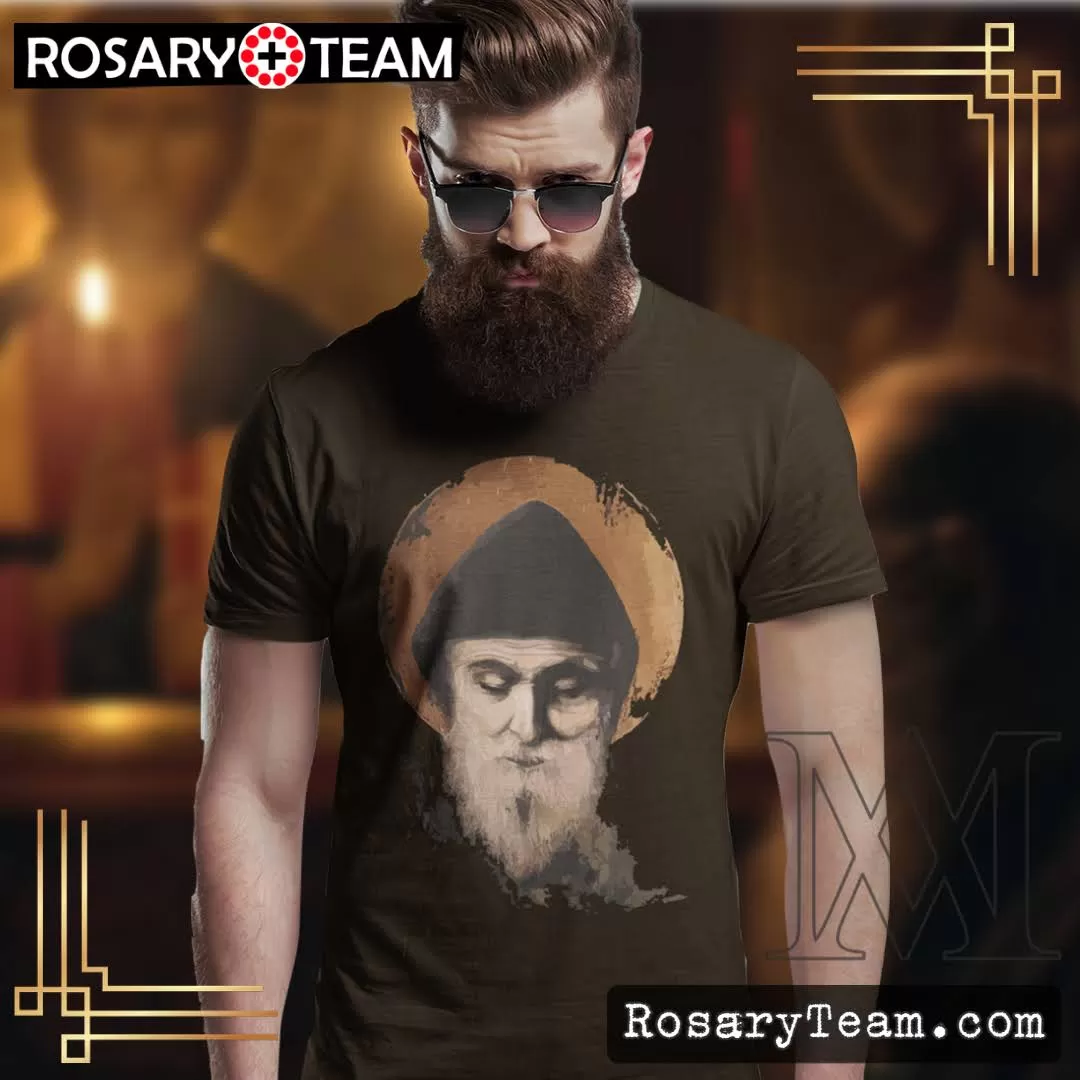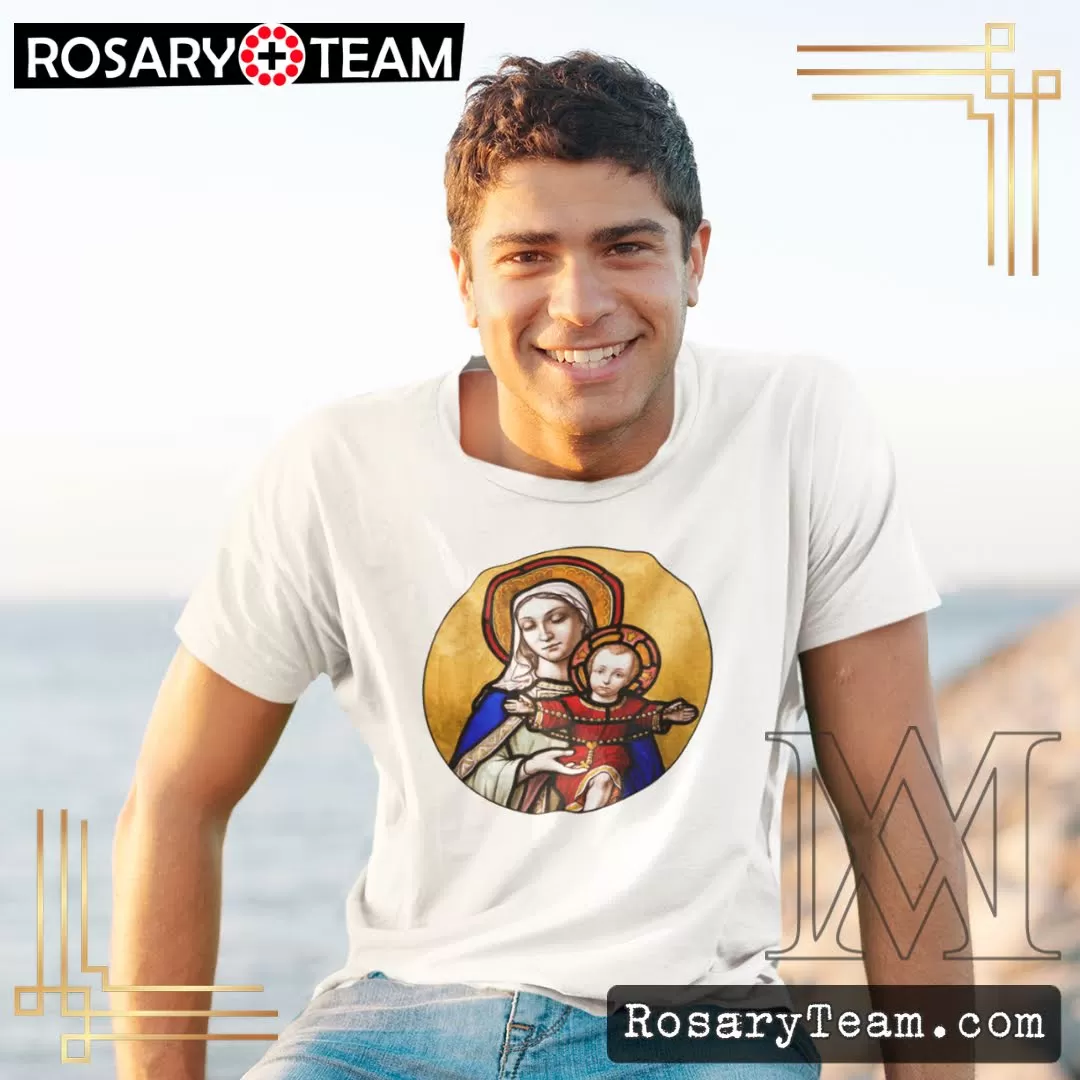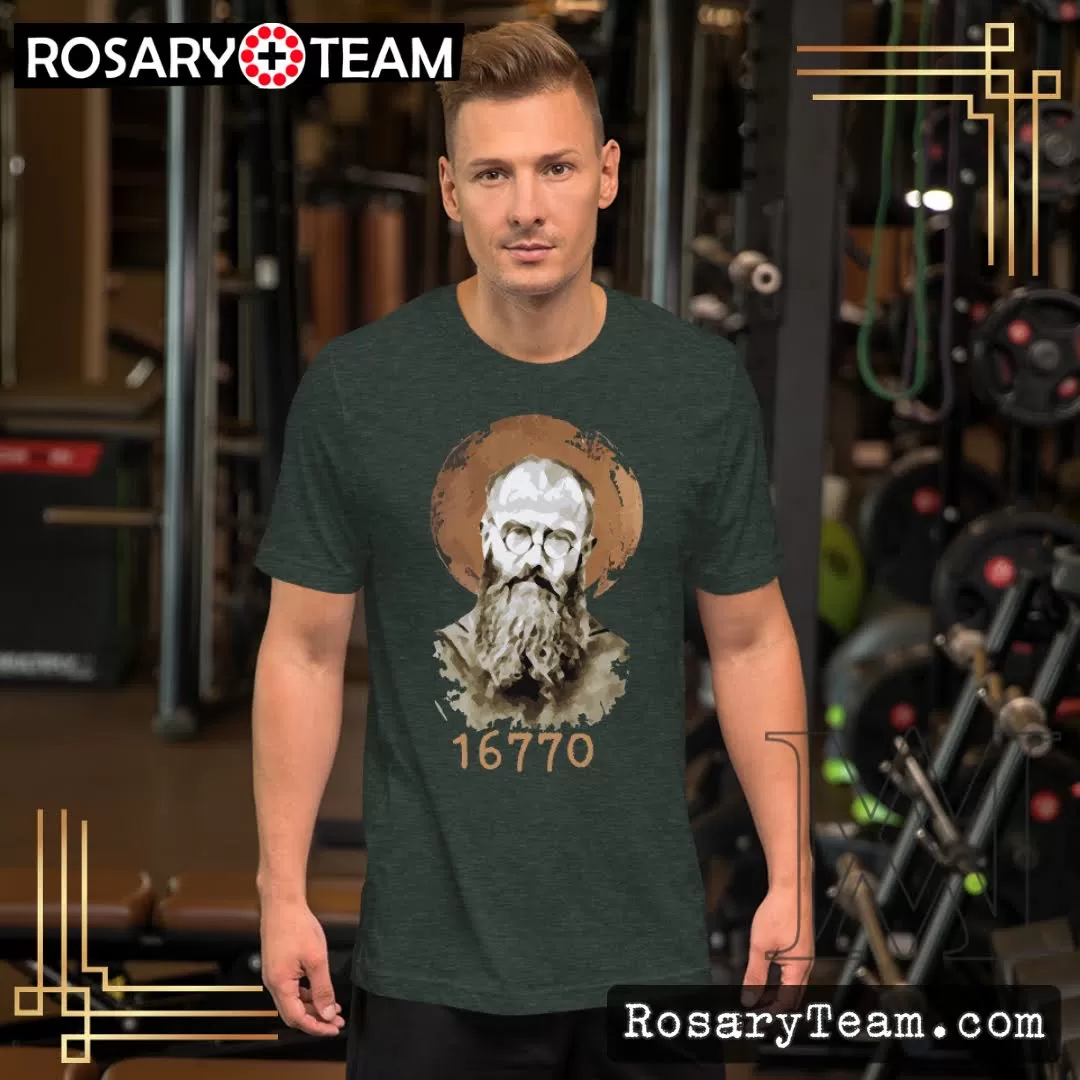SAINT ADELA
SAINT ADELA
Saint Adela entered the Benedictines convent near Ypres after the death of her husband, Count Baldwin IV of Flanders. Adela served as a nun until her death. Died: 1071, Feastday: September 8.
rosary.team

SAINT ADELA
Saint Adela entered the Benedictines convent near Ypres after the death of her husband, Count Baldwin IV of Flanders. Adela served as a nun until her death. Died: 1071, Feastday: September 8.
rosary.team

SAINT ABRA
Consecrated virgin, the daughter of Saint Hilary of Poitiers, born before he became a bishop. Little is known about Abra, who became a consecrated virgin, dedicated to good works among the Christians of Poitiers, in France. Abra died at the age of eighteen. Feastday: December 12.
rosary.team

SAINT AGATHA LIN
Chinese martyr. She was born in 1817 at Ma-Tchang, China. A teacher at a Christian school, Agatha was beheaded for the faith in Mao-kin on January 28, 1858. She was beatified on May 2, 1909.
Died: 1858, Feastday: February 18.
rosary.team

SAINT JOACHIM FATHER OF THE BLESSED VIRGIN MARY
Saint Joachim is not mentioned in the New Testament, and we must depend on apocryphal literature. Saint Joachim was a man of Galilee and the husband of Saint Anne.
Saint Joachim was away from home when he had a vision that Saint Anne was to be blessed with a child. On his return home Saint Anne told him of the visitation of an angel who had revealed to her the same blessing. There was ancient belief that a child born of an elderly mother who had given up hope of having offspring was destined for some high purpose and would be
blessed by all the world.
The traditional tomb of Saint Anne and Saint Joachim was rediscovered in Jerusalem in 1889.
Saint Joachim, Father of the Blessed Virgin. Feast Day is August 6.
rosary.team

SAINT AFRA
Martyr of Brescia, Italy, traditionally associated with Sts. Faustinus and Jovita. Feastday: May 24.
rosary.team

SAINT AEDH MacBRICC
Miracle worker and founder who reputedly cured St. Brigid of a headache. Aedh was the son of Bricc, or Breece, of the Hy Neill. He was robbed of his inheritance by his brother and came under the influence of bishop Illathan of Rathlihen, Offay. Admitted into the monastic life, Aedh founded a religious community in Westmeath. He is listed in some records as a bishop. Died: 589, Feastday: November 10.
rosary.team

SAINT ODILIA
Saint Odilia was born in France in the seventh century. She was born blind and her father wanted to have her put to death. Because of her mother’s pleas it was agreed to give Odilia away anonymously to a peasant.
At the age of twelve Odilia was placed in a convent at Baume. Baptized by Bishop Saint Erhard of Regensberg her eyes opened when they were touched by chrism during the baptismal liturgy. When her father was told of the miracle he was so angry at his son for arranging for Odilia’s return that he struck and killed him. Later the father repented and accepted Odilia. Her father agreed to let her turn his castle into a convent. She became Abbess and then found another convent at Niedermunster.
She died on December 13 around the year 720.
rosary.team

SAINT ADELA
Saint Adela the daughter of King Dagobert II and the sister of Saint Irmina. She founded a monastery at Pfazel, France. Died: 734, Feastday: December 24.
rosary.team

SAINT ACHILLAS
Hermit in Egypt with Amoes. They lived in a desert region of Egypt for decades, secluded and praying there. For this reason they are called “the Flowers of the Desert” by the Greek Church. Achillas and Amoes are especially venerated at the start of the season of Lent. Died: 4th Century, Feastday: January 17.
rosary.team

SAINT ANDREW, APOSTLE
Saint Andrew was a native of Bethsaida, a town in Galilee, upon the banks of the lake of Genesareth. He was the son of Jonas, or John, a fisherman of that town, and brother to Simon Peter. They had afterwards a house at Capharnaum, where Jesus lodged when he preached in that city. When Saint John Baptist began to preach penance in the desert, Saint Andrew was not content with going to hear him as others did, but became his disciple, passed much of his time in hearing his instructions, and studied punctually to practice all his lessons and copy his example. He was with his master when Saint John Baptist, seeing Jesus pass by the day after he had been
baptized by him, said, “Behold the Lamb of God.” Andrew, by the ardour and purity of his desires and his fidelity in every religious practice, deserved to be so far enlightened as to comprehend this mysterious saying. Without delay he and another disciple of the Baptist went after Jesus, who drew them secretly by the invisible bands of his grace, and saw them with the eyes of his spirit before he beheld them with his corporal eyes. Turning back as he walked and seeing them follow him, he said, “What seek ye?” They said they desired to know where he dwelt; and he bade them come and see. There remained but two hours of that day, which they spent with him, and, according to several fathers, the whole night following.
Andrew, who loved affectionately his brother Simon, called afterwards Peter, could not rest till he had imparted to him the infinite treasure which he had discovered, and brought him to Christ that he might also know him. Simon was no sooner come to Jesus than the Saviour of the world admitted him as a disciple and gave him the name of Peter. The brothers tarried one day with him
to hear his divine doctrine, and the next day returned home again. From this time they became Jesus’s disciples, not constantly attending upon him, as they afterwards did, but hearing him
frequently, as their business would permit, and returning to their trade and family affairs again. Jesus, in order to prove the truth of his divine doctrine by his works, wrought his first miracle at
the marriage at Cana in Galilee, and was pleased that these two brothers should be present at it with his holy mother. Jesus, going up to Jerusalem to celebrate the Passover, stayed some days
in Judea, and baptized in the Jordan. Peter and Andrew also baptized by his authority and in his name. Our Saviour came back into Lower Galilee in autumn, and meeting one day Peter and
Andrew fishing in the lake, before the end of the same year, he called them to a constant attendance upon the ministry of the gospel, saying that he would make them fishers of men. Whereupon they immediately left their nets to follow him, and never went from him again. The year following, the Son of God formed the college of his apostles, in which our two brothers are named by the evangelists at the head of the rest. Jesus lodged at the house of Peter and Andrew and at the request of them both cured Peter’s wife’s mother of a fever. Christ would not send away the multitude of five thousand persons who had followed him into the desert till they were refreshed with some food. Saint Philip said two hundred pennyworth of bread would not suffice. Andrew express a stronger faith, saying there was a boy who had five barley loaves and two small fishes which were nothing among so many. Christ could, if he pleased to exert his power, seeing he was greater than Eliseus who, with twenty loaves fed a hundred men. When Christ was at Bethania, at the house of Lazarus, before his Sacred Passion certain Greeks who came to worship God at the festival addressed themselves to Philip. They begged him to introduce them to Jesus. Philip did not undertake to do it alone. He spoke to Saint Andrew and they both together spoke to their divine master.
After Christ’s resurrection and the descent of the Holy Ghost, Saint Andrew preached the gospel in Scythia. Theodoret tells us that he passed into Greece; Saint Gregory Nazianzen mentions particularly Epirus and Saint Jerom Achaia. Saint Paulinus says this divine fisherman, preaching
at Argos, Saint Philastrius tells us, that He came out of Pontus into Greece. The Muscovites have long gloried that Saint Andrew carried the gospel into their country as far as the mouth of the Borysthenes, and to the mountains where the city of Kiou now stands, and to the frontiers of Poland. If the ancients mean European Scythia, when they speak of the theatre of his labours, this authority is favourable to the pretensions of the Muscovites. The Greeks understand it of Scythia, beyond Sebastopolis in Colchis, and perhaps also of the European; for they say he planted the faith in Thrace, and particularly at Byzantium, afterwards called Constantinople. But of this we meet with no traces in antiquity. Several Calendars commemorate the feast of the chair of Saint Andrew at Patrae, in Achaia It is agreed that he laid down his life there
for Christ. When the apostle saw his cross at a distance, he is said to have cried out, “Hail, precious cross, that hast been consecrated by the body of my Lord, and adorned with his limbs as with rich jewels. I come to Thee exulting and glad: receive me with joy into Thy arms. O good cross, that hast received beauty from our Lord’s limbs; I have ardently loved Thee; long have I desired and sought Thee: now Thou art found by me, and art made ready for my longing soul;
receive me into Thy arms, taking me from among men, and present me to my Master; that he who redeemed me on Thee, may receive me by Thee.” The body of Saint Andrew was translated from Patrae to Constantinople in 357, together with those of Saint Luke and Saint Timothy, and deposited in the Church of the Apostles, which Constantine the Great had built a little before.
It is the common opinion that the cross of Saint Andrew was in the form of the letter X, styled a cross decussate, composed of two pieces of timber crossing each other obliquely in the middle. That such crosses were sometimes used is certain; yet no clear proofs are produced as to the form of Saint Andrew’s cross. It is mentioned in the records of the duchy of Burgundy, that the cross of Saint Andrew was brought out of Achaia and placed in the nunnery of Weaune, near Marseilles. It was thence removed into the abbey of Saint Victor, in Marseilles, before the year 1250, and is still shown there. A part thereof, inclosed in a silver case gilt, was carried to Brussels by Philip the Good, Duke of Burgundy and Brabant, who, in honour of it, instituted the Knights of the Golden Fleece, who for the badge of their Order, wear a figure of this cross, called Saint Andrew’s cross, or the cross of Burgundy.
rosary.team